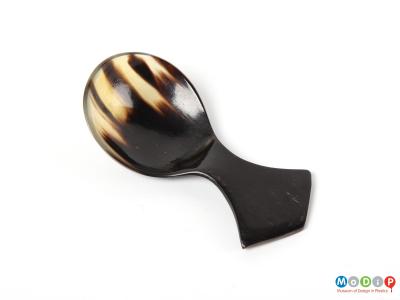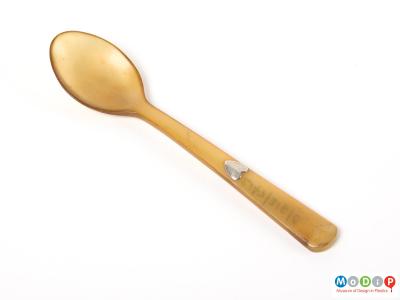The pleasing tactile nature of horn makes it an ideal material for objects made to be handled, such as knives, forks and spoons. The fact that it does not conduct heat and thus does not burn the mouth is also advantageous, especially for spoons. Spoons and ladles are easy to form from horn and have been made in horn for over 4000 years. They were most frequently made of ox horn and were sometimes plain and crude (1 - 6), sometimes carved or highly polished (7 - 9) and other times finely wrought and adorned with silver (10 - 13).
A small spoon such as that at (14) adorned with a heart is likely to have been given as a birth present. The earliest horn-handled knives and forks known to have survived date from the 15th century. The shapes of horn handles vary as demonstrated by a comparison between the forks displayed at (15 - 19) and sometimes they are decorated as in the case of the knife at (20). A typical pattern for carver handle ends is a hoof shape as at (21). Sometimes the blade is also made of horn (22), this example may be a butter knife. Horn has also been used to decorate penknives (23 - 24).
























